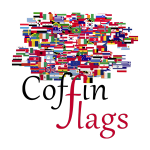Description
 Brazil, officially the Federative Republic of Brazil, is the largest country in both South America and Latin America. At 8.5 million square kilometres (3.2 million square miles) and with over 208 million people, Brazil is the world’s fifth-largest country by area and the fifth most populous. Its capital is Brasília, and its most populated city is São Paulo. The federation is composed of the union of the 26 states, the Federal District, and the 5,570 municipalities. It is the largest country to have Portuguese as an official language and the only one in the Americas; it is also one of the most multicultural and ethnically diverse nations, due to over a century of mass immigration from around the world.
Brazil, officially the Federative Republic of Brazil, is the largest country in both South America and Latin America. At 8.5 million square kilometres (3.2 million square miles) and with over 208 million people, Brazil is the world’s fifth-largest country by area and the fifth most populous. Its capital is Brasília, and its most populated city is São Paulo. The federation is composed of the union of the 26 states, the Federal District, and the 5,570 municipalities. It is the largest country to have Portuguese as an official language and the only one in the Americas; it is also one of the most multicultural and ethnically diverse nations, due to over a century of mass immigration from around the world.
The flag of Brazil, known in Portuguese as “Verde e Amarela” (“The Green and Yellow”), or less usually Auriverde (“The Gold-Green”), is a blue disc depicting a starry sky (which includes the Southern Cross) spanned by a curved band inscribed with the national motto “Ordem e Progresso” (“Order and Progress”), within a yellow rhombus, on a green field. Brazil officially adopted this design for its national flag on November 19, 1889 — four days after the Proclamation of the Republic, to replace the flag of the Empire of Brazil. The green field represented the House of Braganza of Pedro I, the first Emperor of Brazil, while the yellow parallelogram represented the House of Habsburg of his wife, Empress Maria Leopoldina. A blue circle with white five-pointed stars replaced the arms of the Empire of Brazil — its position in the flag reflects the sky over the city of Rio de Janeiro on November 15, 1889. The motto Ordem e Progresso is inspired by Auguste Comte’s motto of positivism: “L’amour pour principe et l’ordre pour base; le progrès pour but” (“Love as a principle and order as the basis; progress as the goal”).







